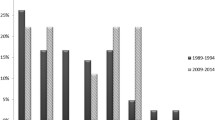Abstract
The purpose of the present study was to analyze the microbiological profile of cases of keratitis following trauma with vegetative matter in a tertiary care center. A retrospective review of the medical records of 49 patients with keratitis following vegetative matter injury over a 3-month period was performed. All patients underwent corneal scraping for smears and inoculation onto various culture media. The microbiological profile was based on the smear and culture reports. For patients who were culture-negative, outcome after standard empirical antibacterial therapy as per hospital protocol was analyzed. Thirteen patients with corneal ulcers had fungal etiology, eight had bacterial etiology, and two had protozoal etiology, while 13 patients were polymicrobial and 13 were culture-negative. Polymicrobial infections were mainly bacterial (eight cases), and the remaining five cases had coexistent fungal and bacterial etiology. The treatment was directed to the specific organism and patients improved with medical or surgical therapy. Only a third of culture-negative cases showed fungal etiology on biopsy or histopathology after keratoplasty while a third showed improvement with therapy. Corneal infections following vegetative matter trauma show a varied etiological profile; however, bacterial and polymicrobial infections are more prevalent. Empirical anti-fungal therapy, as commonly practiced, must be avoided in cases with vegetative matter injury.



Similar content being viewed by others
References
Gopinathan U, Sharma S, Garg P, Rao GN (2009) Review of epidemiological features, microbiological diagnosis and treatment outcome of microbial keratitis: experience of over a decade. Indian J Ophthalmol 57:273–279
Gupta N, Tandon R (2008) Investigative modalities in infectious keratitis. Indian J Ophthalmol 56:209–213
Gokhale NS (2008) Medical management approach to infectious keratitis. Indian J Ophthalmol 56:215–220
Prajna NV, John RK, Nirmalan PK, Lalitha P, Srinivasan M (2003) A randomised clinical trial comparing 2 % econazole and 5 % natamycin for the treatment of fungal keratitis. Br J Ophthalmol 87:1235–1237
Prajna NV, Nirmalan PK, Mahalakshmi R, Lalitha P, Srinivasan M (2004) Concurrent use of 5 % natamycin and 2 % econazole for the management of fungal keratitis. Cornea 23:793–796
Bharathi MJ, Ramakrishnan R, Vasu S, Meenakshi R, Palaniappan R (2003) Epidemiological characteristics and laboratory diagnosis of fungal keratitis A three-year study. Indian J Ophthalmol 51:315–321
Bharathi MJ, Ramakrishnan R, Meenakshi R, Padmavathy S, Shivakumar C, Srinivasan M (2007) Microbial keratitis in South India: influence of risk factors, climate, and geographical variation. Ophthalmic Epidemiol 14:61–69
McDonnell PJ (1996) Empirical or culture-guided therapy for microbial keratitis? A plea for data. Arch Ophthalmol 114:84–87
Benson WH, Lanier JD (1998) Current diagnosis and treatment of corneal ulcers. Curr Opin Ophthalmol 9:45–49
Acknowledgments
This study was supported by Hyderabad Eye Research Foundation, India.
Conflict of interest
The authors do not have any financial interest or any conflicting relationship in any of the issues or products referred to in the manuscript.
Author information
Authors and Affiliations
Corresponding author
Rights and permissions
About this article
Cite this article
Taneja, M., Ashar, J.N., Mathur, A. et al. Microbial keratitis following vegetative matter injury. Int Ophthalmol 33, 117–123 (2013). https://doi.org/10.1007/s10792-012-9643-0
Received:
Accepted:
Published:
Issue Date:
DOI: https://doi.org/10.1007/s10792-012-9643-0




